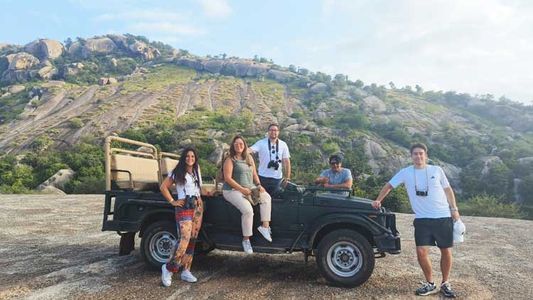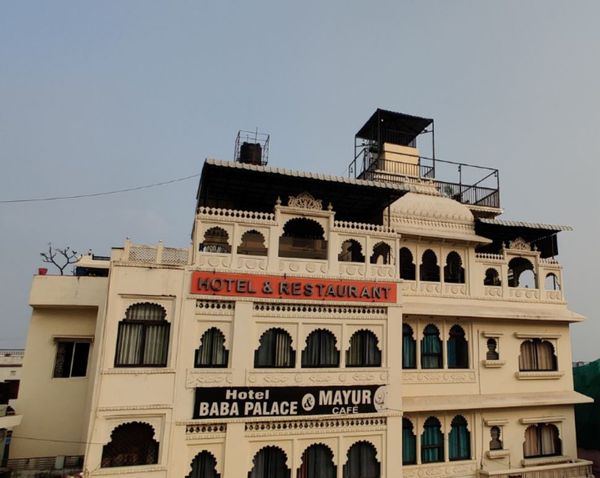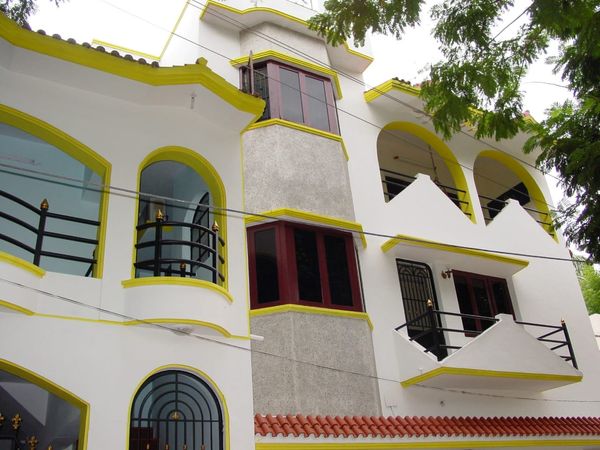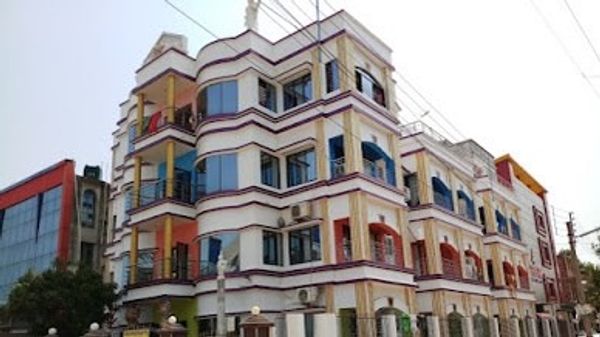Jawai Leopard Safari: Where Wilderness Meets Rajasthan’s Soul
 Ruhi RR
21 Aug, 2025
8 mins read
20
Ruhi RR
21 Aug, 2025
8 mins read
20

When I first heard about Jawai Leopard Safari, I was intrigued. How could a small corner of Rajasthan, better known for deserts and palaces, be home to one of the most thriving leopard populations in India? But when I finally made the journey to the rugged granite hills of Pali district, I understood why Jawai is often called the “Leopard Hills of India.â€

Here, the wilderness feels raw and untouched. There are no crowded national parks or noisy jeeps chasing animals. Instead, you drive through boulder-strewn hills and wide open valleys, waiting quietly as leopards emerge gracefully from their rocky dens. It’s not just a safari; it’s an intimate brush with nature’s most elusive predator.
What Makes Jawai Unique
Jawai stands out because of the rare coexistence between humans and leopards. The leopards roam freely near temples, villages, and grazing grounds, yet attacks are virtually unheard of. Locals even worship these big cats, believing them to be protectors.
This harmony makes Jawai unlike any other wildlife destination. You’re not entering a restricted reserve; you’re stepping into a living landscape where nature and tradition thrive together. And because the leopard density here is high, the chances of spotting one during a safari are much greater than in most national parks.
Reaching Jawai: Getting There
Jawai is strategically located between Udaipur and Jodhpur, making it easy to combine with a cultural trip to Rajasthan.
- By Air: Udaipur Airport (150 km) and Jodhpur Airport (180 km) are the closest.
- By Train: Jawai Bandh railway station connects well with cities like Jaipur, Delhi, and Ahmedabad.
- By Road: You can hire a cab or self-drive from Udaipur, Jodhpur, or Jaisalmer. The roads are scenic, passing through rural Rajasthan and rolling hills.
I chose to drive from Udaipur, and the journey itself was magical—passing small villages, fields, and finally arriving in a land where wilderness dominates.
The Safari Experience
A Jawai leopard safari usually happens twice a day—early morning and evening. The jeeps are open-roof, and local trackers guide you through the terrain. Don’t expect manicured jungle tracks; this is rugged country where nature sets the pace.
During my safari, we first spotted a crocodile basking near Jawai Bandh. Later, as the sun turned the hills golden, we saw movement among the rocks. A leopardess emerged, her sleek form blending perfectly with the boulders. She paused for a moment, scanning the horizon, before disappearing back into her den. That single sighting, against the dramatic backdrop of Jawai’s landscape, was worth the entire trip.
Beyond leopards, Jawai is also home to hyenas, jackals, wolves, and more than 100 species of birds, including flamingos and owls. The region’s biodiversity often surprises visitors who expect only leopards.
Best Time for Jawai Leopard Safari
The ideal months for visiting Jawai are October to March, when the weather is pleasant and wildlife sightings are consistent.
- Winter (Nov–Feb): Cool mornings, perfect lighting for photography, and a comfortable safari experience.
- Summer (Apr–Jun): Hot but rewarding; leopards are often spotted near waterholes.
- Monsoon (Jul–Sep): Scenic and green, though safaris can be affected by rain.
I went in January, and the chilly mornings made the safari feel adventurous, while evenings brought incredible sunsets over the granite cliffs.
Where to Stay in Jawai
Accommodation in Jawai is as much a part of the experience as the safari itself. Most stays are luxury camps or eco-lodges that blend comfort with wilderness.
- Suján Jawai: For those seeking exclusivity and five-star experiences.
- Jawai Leopard Camp: Luxurious tented stays close to prime leopard zones.
- Eco-lodges & Homestays: Budget-friendly stays that still offer guided safaris and local hospitality.
Waking up to the sound of birds and sipping tea while watching the hills at sunrise was one of my favorite parts of the trip.
Travel Tips for Jawai Safari
- Book Safaris Early: Especially during peak season, as spots fill fast.
- Carry Binoculars & Zoom Lens: Leopards often perch far away on rocky cliffs.
- Dress Wisely: Neutral colors, caps, and light jackets for chilly mornings.
- Respect Nature: Keep noise low and don’t pressure the guides to chase animals.
- Budget: A mid-range safari trip (stay + food + safari) costs ₹6,000–₹12,000 per person per night. Luxury experiences can go much higher.
Exploring Beyond the Safari
If you have more time, combine your Jawai trip with nearby attractions:
- Ranakpur Jain Temple: A marble architectural wonder, about 60 km away.
- Kumbhalgarh Fort: Famous for its long wall, second only to the Great Wall of China.
- Udaipur & Jodhpur: Blend wildlife with royal palaces, lakes, and heritage walks.
This mix of culture and wilderness makes Jawai a complete travel experience.
Final Thoughts: Why Jawai is Worth It
For me, the Jawai Leopard Safari was more than just wildlife spotting—it was a lesson in balance. Watching leopards coexist peacefully with people, against the raw beauty of granite hills and open skies, was humbling.
If you’re looking for an experience in Rajasthan that goes beyond forts and deserts, Jawai is where you should go. It’s intimate, wild, spiritual, and unforgettable. By the time you leave, the silence of the hills and the piercing gaze of the leopard will stay with you long after the safari ends.
Written By:
Ruhi RR



Hotels at your convenience
Now choose your stay according to your preference. From finding a place for your dream destination or a mere weekend getaway to business accommodations or brief stay, we have got you covered. Explore hotels as per your mood.


